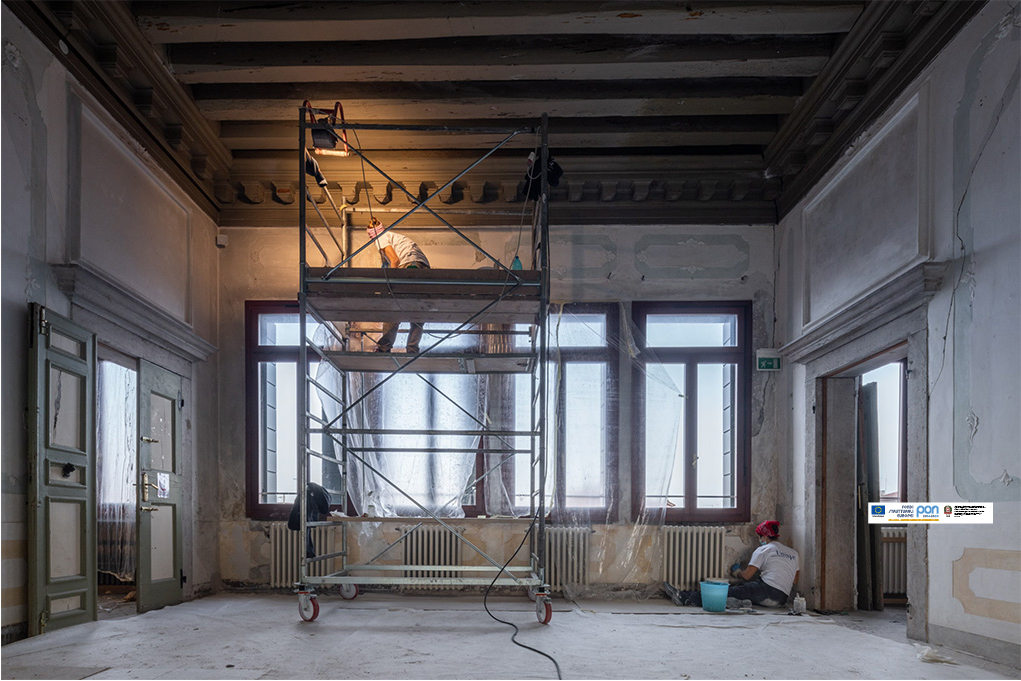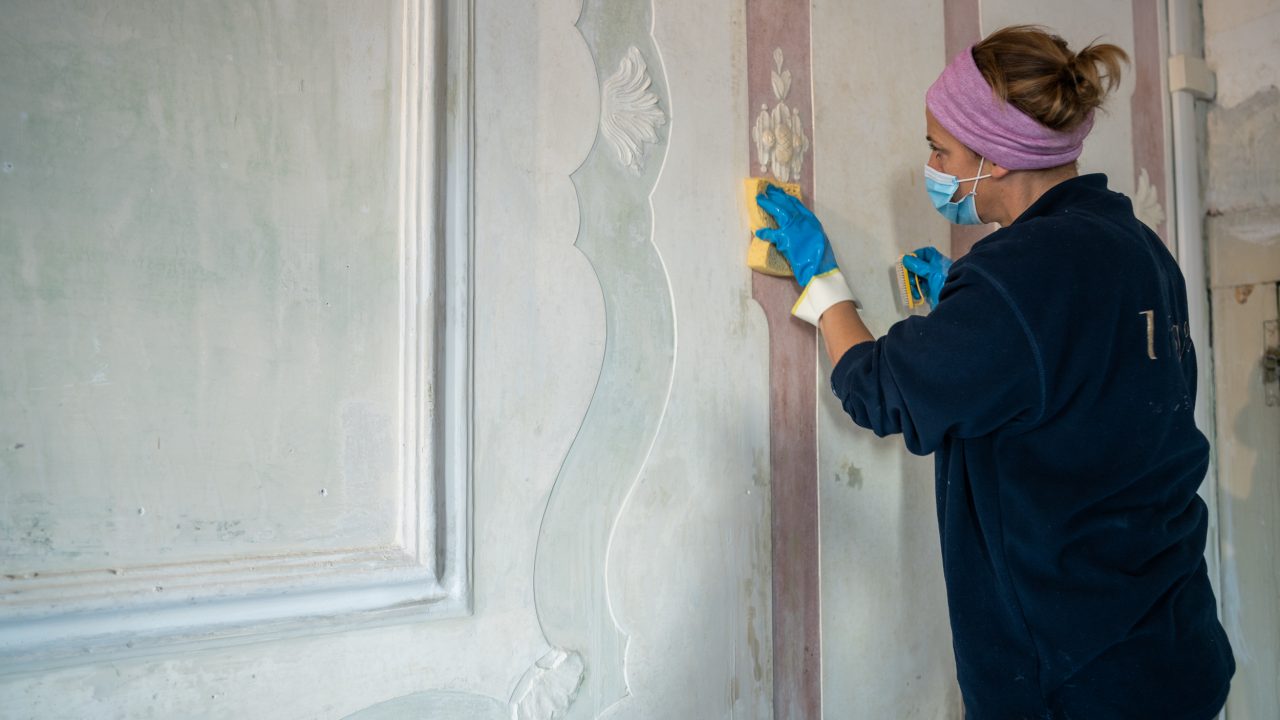We would like to tell you about the restoration of Palazzo Carminati in Venice. The restoration is made up of several phases: the first is dedicated to the cleaning of the decorative walls.
We started from the application of a solution based on demineralized water and acetone on the marmorino, and then with the mechanical removal of the layers, by using different tools such as scalpels and scrapers.
UNISVE has just completed the restoration of the surfaces of the second noble floor of Palazzo Carminati under the direction of the technicians of the Public Works Office of the School Building sector of the Municipality of Venice. We would like to show you, with some articles, the insights and the main phases of this intervention. The first is dedicated to the cleaning of the eighteenth-century decorative walls in marmorino and stucco.
Given the presence of an underlying layer of lime-based color, strongly adhered to the surface, it was removed by applying a specific calcium hydroxide-based pickling product, applied with a brush or spatula and removed mechanically. After each phase, a thorough rinsing of the surface is always carried out using demineralized water with sponges and soft brushes. To remove possible residues of the pickling product (with strong basicity), a washing with citric acid in a low concentration solution was carried out.
In a second step, it was used a specific pickling product, removed mechanically in a second time and followed by an accurate rinsing of the surfaces.
In the next chapter we will continue the story of our restoration with the other two phases: the consolidation and the integration.
The works were made possible thanks to the European Structural Funds allocated by the European Union and coordinated by MIUR, according to the PON 2004-2020 project.




